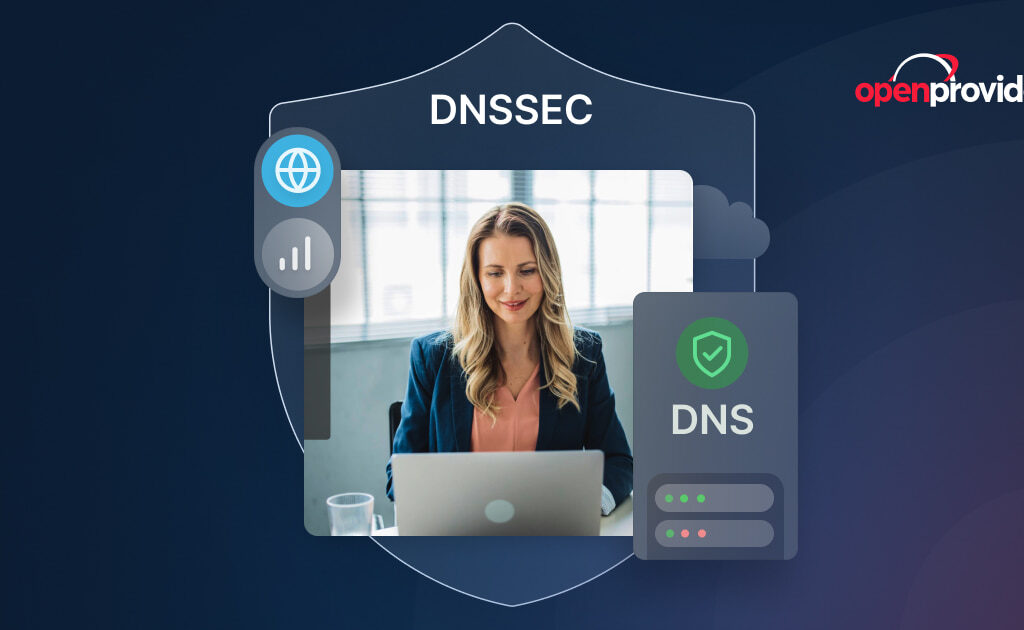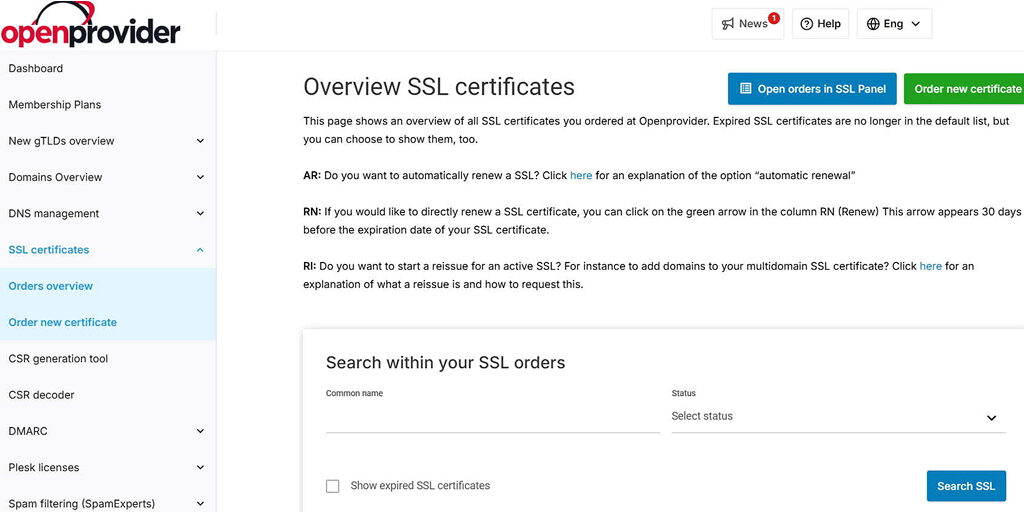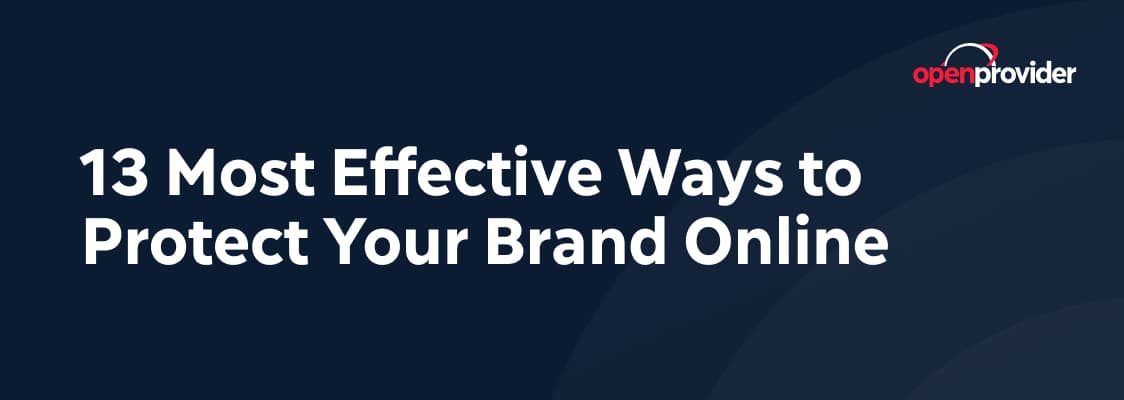Imagine waking up to find a website that looks exactly like yours, but isn’t.
It’s selling fake products under your name, redirecting your customers, and collecting their personal data. Or worse, your own domain has been hijacked overnight, and now your customers are getting phishing emails that appear to come from you
These aren’t hypothetical scenarios, but everyday realities, and even optimistic ones: for this, you need to be able to protect your brand online.
Why protecting your brand online is more urgent than ever
Cyber threats are evolving fast and artificial intelligence is accelerating the change.
AI is now an accelerator for malicious purposes (and institutions like ICANN are responding to them by setting up dedicated teams to scale their AI-based countermeasures).
Some of AI’s malicious applications are to generate more convincing phishing emails, mimic brand voices with deep fake precision, and spin up fake websites and social media accounts in minutes.
But just as bad actors become more sophisticated, so do the tools to fight them. Secure domain protocols, real-time monitoring and identity validation are some of the best practices that we’ll explore here.
In fact, from phishing scams and domain hijacking to counterfeit websites, typosquatting, and fake social media accounts, digital threats to your brand can strike in more ways than one.
And the consequences go far beyond technical headaches:
- Loss of customer trust
- Damaged online reputation
- Legal implications and financial setbacks
- Reduced conversion rates and lifetime customer value
In a market that’s increasingly crowded and competitive, trust and visibility are everything. And they start with protecting your brand from day one.
We’ve spent over 20 years helping domain professionals and web service providers safeguard their digital identity. In this guide, we’ll walk you through the most effective and actionable ways to secure your brand online without jargon or scare tactics.
Just clear, tech-savvy advice to help you stay one step ahead.
Let’s dive into it.
13 ways to protect your digital brand
When it comes to brand protection, prevention is far more cost-effective than crisis management.
Here are 13 proven, practical strategies to keep your digital brand secure and trustworthy, from your domain name to your email infrastructure.
1. Enable domain locking and auto-renewal
Your domain name is the foundation of your brand. Domain locking prevents unauthorized transfers by ensuring changes to your domain can’t happen without your explicit approval. Combine this with auto-renewal to eliminate the risk of losing ownership due to a missed expiration date: something that can happen to even the most organized teams.
Openprovider allows you to lock your domains and set up auto-renewals in just a few clicks via the Reseller Control Panel (RCP) or API.
2. Enable DNSSEC to protect your domain’s integrity
The Domain Name System (DNS) was never built with security in mind—which makes it a prime target for cybercriminals. One of the most dangerous attacks? DNS spoofing, where forged DNS data is injected to redirect traffic away from your legitimate site to a malicious copy.

DNSSEC (Domain Name System Security Extensions) addresses this by adding cryptographic signatures to DNS data. It works like a digital seal of authenticity, verifying that the DNS information a visitor receives hasn’t been altered or forged. Without it, attackers can manipulate DNS records in transit, leading to phishing, malware injection, or complete traffic hijacking.
What DNSSEC protects you from
- Cache poisoning: malicious DNS data stored by a resolver, sending users to the wrong IP address.
- Man-in-the-middle (MitM) attacks: attackers intercept and modify DNS responses.
- Traffic diversion: customers land on fake sites that look like yours but are designed to steal data or credentials.
How to implement DNSSEC at Openprovider
Enabling DNSSEC isn’t just a checkbox: it requires coordination between your domain registrar and DNS host. At Openprovider, we support DNSSEC across hundreds of TLDs. For API users, you can programmatically upload DS (Delegation Signer) records or automate signing if you’re hosting your own DNS infrastructure. For RCP users, DNSSEC can be enabled with guided steps.
Pro tip: combine DNSSEC with Premium DNS for added benefits like anycast routing, faster resolution, and full DDoS protection.
3. Use WHOIS privacy protection
WHOIS records often include sensitive personal or business information. If left exposed, this data can be mined for targeted phishing or even domain hijacking attempts.
WHOIS Privacy shields your identity from public view, helping to reduce spam, fraud, and social engineering risks.
WHOIS Privacy comes free with most domains at Openprovider for Members.
4. Protect your brand and domain data from unauthorized changes
In addition to WHOIS privacy, make sure your domain configuration is protected from unauthorized edits. Use registrar-level protections like transfer locks and change notifications to keep your ownership data and DNS settings secure.
5. Secure your website with SSL/TLS certificates

If your website isn’t using SSL or TLS encryption, it’s not just vulnerable, it’s already a red flag for users and browsers. SSL (and TLS, as we have broken down in this infographic) ensures that all data transferred between your website and your visitors is encrypted and safe from eavesdropping.
It’s no longer just about protecting credit card numbers or login details. Google now marks all non-HTTPS sites as “not secure”, and many users won’t even proceed to your website without that little padlock in the URL bar.
What SSL and TLS do for your brand
- Encrypts data in transit to prevent theft or manipulation.
- Authenticates your identity to users, especially with OV (organization validated) and EV (extended validation) certificates.
- Boosts trust and conversions, especially on landing pages and e-commerce sites.
- Improves SEO: Google confirmed HTTPS is a ranking factor.
Types of SSL certificates available at Openprovider
- DV (domain validation): fast and simple, ideal for small sites or internal tools.
- OV (organization validation): verifies your company identity, better for B2B.
- EV (extended validation): extended validation certificates offer the highest level of authentication available for SSL/TLS; To issue an EV certificate, the Certificate Authority (CA) must verify:
- Legal existence and identity of the business
- Operational and physical presence
- Exclusive rights to use the domain
- Authorization of the individual requesting the certificate
- Wildcard SSL: it secures one domain and all its subdomains at one level secure multiple subdomains or domains under one certificate.
- SAN (Subject Alternative Name) for multi-domain SSL: it secures multiple, distinct domain names or subdomains, even across different root domains.
How to deploy SSLs
You can buy, renew, and manage SSLs directly from the RCP or fully automate the process via our API. If you’re managing high volumes or running web hosting infrastructure, this makes it easy to integrate SSL provisioning directly into your customer journey.
We partner with Sectigo to provide flexible, affordable SSL options—and Members get exclusive discounts on certificates.
6. Implement email authentication (SPF, DKIM, DMARC)
Email spoofing is one of the most common attack vectors for phishing. Protocols like SPF (Sender Policy Framework), DKIM (DomainKeys Identified Mail), and DMARC (Domain-based Message Authentication, Reporting & Conformance) authenticate your outgoing emails and help prevent impersonation.
Combine these with tools like EasyDMARC (available in our Marketplace) for full email authentication coverage and insights.
7. Register your brand across relevant TLDs
If your brand lives on example.com, registering example.net, example.org, or ccTLDs (.nl, .de, etc.) is a smart way to prevent impersonators from using them.
Known as defensive registration, it blocks common vectors for domain squatting and brand abuse.
8. Monitor for typosquatting and lookalike domains
Typosquatting domains like examp1e.com or e-xample.net can be used to trick customers and steal traffic.
Set up monitoring tools to detect these variants early and act quickly, whether it’s through takedown requests or UDRP procedures.
9. Audit your DNS configuration regularly
DNS misconfigurations can create security holes and service interruptions. Schedule regular DNS audits to check records, identify outdated entries, and ensure everything is aligned with your current infrastructure.
Our Premium DNS option, powered by Sectigo, adds resilience with anycast routing and DDoS protection.
10. Use 2FA on all your registrar and hosting accounts
A weak password is all it takes to compromise your entire brand presence.
Enforce strong password policies and enable two-factor authentication (2FA) on registrar, control panel, and CMS logins to add an extra layer of protection.
11. Protect your brand by educating your team
Your internal and external teams are part of your security perimeter.
Provide ongoing education on phishing red flags, safe credential handling, and incident reporting procedures. Most security breaches start with human error, and this is where you can catch them first.
12. Monitor for fake social media profiles
Brand abuse often extends beyond your website. Impersonator accounts on LinkedIn, Instagram, or Facebook can harm your reputation fast. Use tools that alert you when fake profiles appear, and work with platforms to get them removed quickly.
13. Set up alerts for trademark violations to protect your brand
Automated tools can scan marketplaces, search engines, and social platforms for unauthorized use of your brand name, logos, or slogans. When spotted early, these violations are easier to resolve with takedown requests or legal actions.
Take control before someone else takes your brand
The threats are real: domain hijacking, phishing scams, DNS spoofing, typosquatting, impersonation, etc. And they’re only getting more sophisticated with the rise of AI-driven attacks.
The damage?
A single security lapse can cost you customer trust, revenue, and years of hard-earned reputation. It doesn’t just hurt your business: it empowers someone else to profit off your brand.
At Openprovider, we’ve been helping businesses protect their domains, data, and reputations for over 20 years. With robust tools, a developer-friendly API, advanced DNS and SSL solutions, and memberships that give you access to domains at cost price, you can build a safer, smarter digital presence, at scale and on budget.Ready to take the next step? Explore our Membership plans or talk to our team about securing your domain portfolio with confidence.


